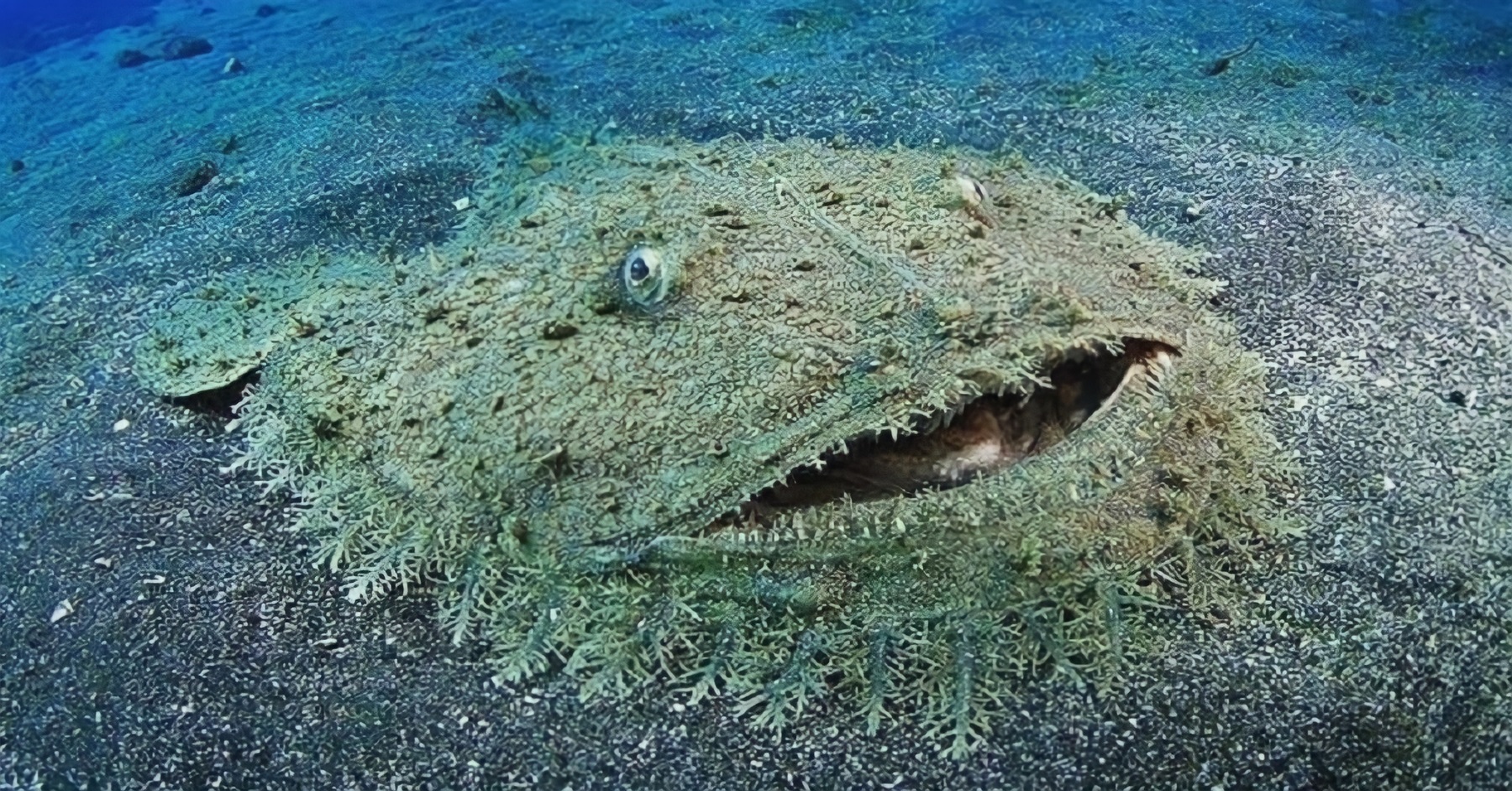The tasselled wobbegong (Eucrossorhinus dasypogon), a species of carpet shark found in the family Orectolobidae, is a remarkable inhabitant of the ocean floor. Residing in the shallow coral reefs off northern Australia, New Guinea, and adjacent islands, this shark is known for its extraordinary camouflage abilities, blending seamlessly with the seafloor.
Reaching up to 1.8 meters (5.9 feet) in length, the tasselled wobbegong is distinguished by its broad, flattened body and head, adorned with a fringe of branching dermal flaps around its head. These unique features enable it to disguise itself against the coral reef environment, making it nearly indistinguishable from its surroundings.
Despite its slow swimming capabilities, the tasselled wobbegong is an effective ambush predator, especially active at night. It preys on nocturnal fish such as soldierfish and squirrelfish, as well as tiny fish and crustaceans that often settle atop the resting shark’s head, unwittingly attracting larger prey for the wobbegong.
Intriguingly, this species has been observed engaging in active luring behavior, a rare trait among sharks. When sensing food nearby, it can attract larger fish, which are then ambushed. This unique hunting strategy, coupled with its perfect camouflage, makes the tasselled wobbegong a formidable predator of the deep.
While the tasselled wobbegong is a fascinating subject for ecotourism, its cryptic appearance and poor vision necessitate caution from humans to avoid accidental harassment or provoking a defensive response. The shark’s habitat is under threat due to extensive fishery activity and habitat degradation, highlighting the need for conservation efforts to protect this unique species and its environment.






